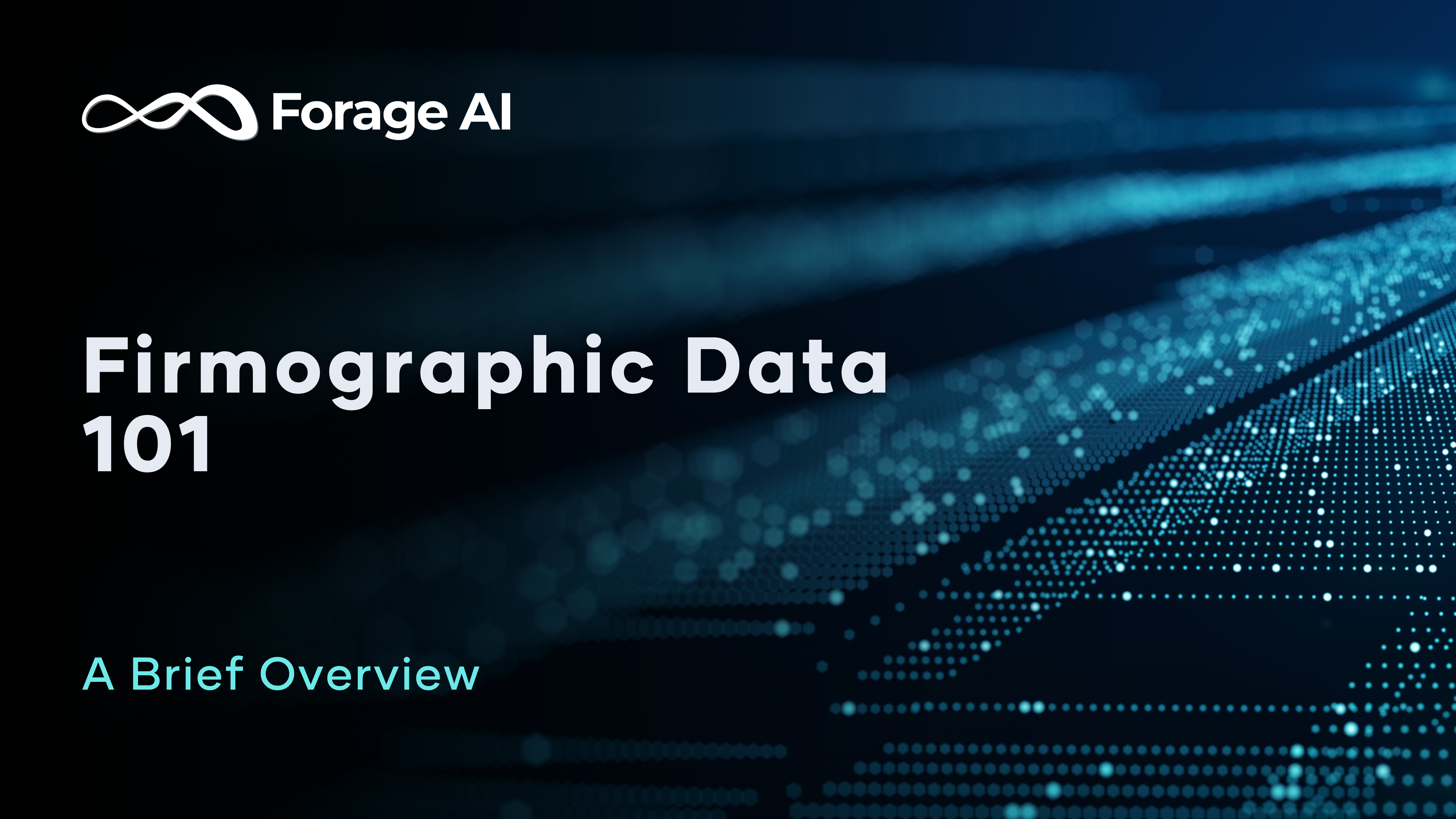Think of firmographic data as the foundation for meaningful B2B relationships. Simply put, firmographics describe any data that reveals key business characteristics – from basic company details to complex organizational structures and company growth metrics. Whether you’re building target lists, tailoring your outreach, or expanding into new markets, understanding these firm data points will sharpen every aspect of your strategy.
Businesses that don’t personalize their communication risk losing 65% of potential customers to competitors. For B2B relationships, this personalization matters even more – with 84% of business customers stating that being treated as a human rather than a number determines their vendor choices.
The impact of getting this personalization right is significant. Companies using detailed firmographic data for market analysis techniques to qualify and target accounts see remarkable results. A recent Rollworks study found that marketers focusing on lead quality over quantity through better data saw a 73% increase in their average deal sizes.
Ready to dive in? Let’s explore what firmographics are, how businesses use them, and why they matter for your growth strategy.
What Is Firmographic Data?
Firmographic data is the corporate equivalent of demographics. While demographics are used to build profiles of individual customers, firmographic data reveals the essential characteristics of your business customers. This data drives smarter operational planning, partnership decisions, and market expansion strategies.
Key components of a company’s firmographic profile include:
- Company Identity: Legal name, trade names (DBA), brand names, and parent-company relationships provide the foundation for accurate company identification.
- Company Size: Employee count and annual revenue indicate operational capacity and purchasing power – essential metrics for B2B market segmentation.
- Industry Focus: Core business sectors and target markets shape product-market fit.
- Geographic Footprint: Headquarters location, branch offices, and regional presence shape market access and regulatory requirements.
- Ownership Structure: Public, private, or non-profit status influences decision-making processes.
- Key Personnel: Leadership teams, department heads, and decision-makers who guide company direction and strategy.
- Company History: Market tenure and performance track record can signal stability and experience.
- Growth Story: Recent expansions, mergers, and funding can affect key company growth metrics.
- Technology Infrastructure: The systems, software, and digital tools a company uses that indicate its operational maturity, technical capabilities, and potential technology needs.
Each element contributes to a comprehensive view of potential business partners and customers. Combined, these firmographic data points enable precise targeting and strategic planning across your organization.
Firmographics vs. Demographics vs. Technographics
Building a complete market picture requires three types of business intelligence: firmographics, demographics, and technographics. Though complementary, each reveals distinct aspects of your potential customers.
These intelligence types serve different purposes:
- Firmographics: Reveals business fundamentals (revenue, industry, employee count)
- Demographics: Shows individual characteristics (age, gender, income)
- Technographics: Maps technology investments (CRM platforms, cloud services)
Here’s a real-world example: When you’re looking at a potential customer, you might see:
- Demographics: “Jane Smith, 35, Product Manager”
- Firmographics: “XYZ Corp, $50M revenue, SaaS industry, 200 employees”
- Technographics: “Uses HubSpot for CRM, AWS for cloud hosting”
While demographics and technographics provide valuable context, firmographic data forms the foundation for strategic planning and business data analytics across sectors. From healthcare to real estate, understanding organizational fundamentals drives more effective business decisions.
Why Firmographic Data Matters
Let’s look at four ways firmographic data makes a real difference in your decision-making and growth strategy.
- Improved Lead Quality and Targeting
Want to stop chasing unqualified leads? Firmographic data helps you identify and engage prospects that truly match your ideal customer profile. Here’s how it transforms your targeting:
- Identify ideal fits: Focus on organizations whose size, structure, and growth stage align with your successful customers.
- Prioritize with precision: Know which accounts deserve immediate attention based on objective measures like revenue range, employee count, and organizational maturity.
- Personalize from day one: Build meaningful connections by understanding a company’s scale and structure before your first conversation.
- Market Analysis That Makes Sense
Replace guesswork with data-driven insights: Firmographic segmentation enables you to:
- Spot sector opportunities: Identify growth potential in specific industries and sub-sectors with precision
- Refine targeting strategy: Develop distinct approaches for different market segments based on firm characteristics
- Track market evolution: Monitor changing demand patterns and industry trends across your target segments
- Risk Management in Action
Firmographic data helps you navigate business decisions with confidence:
- Map competitive landscape: Analyze operational models and market positioning of key players in your target sectors.
- Benchmark performance: Compare growth metrics, operational efficiency, and market penetration against industry standards.
- Validate opportunities: Assess market viability and potential risks before investing in new territories or product lines.
- Effective Resource Planning
Firmographic insights help companies across industries maximize efficiency:
- Optimize operations: Streamline supply chain decisions and resource deployment.
- Guide infrastructure: Position assets and services strategically based on market needs.
- Focus investments: Direct resources toward high-potential accounts and market segments.
Examples of Firmographic Data Points
Now that the strategic value of firmographic data is clear, let’s examine the specific data points that create this comprehensive business intelligence. Each element provides unique insights for targeted market analysis:
- Basic Company Identity:
- Legal name and registration details
- Trading names, DBA (Doing Business As), and brand names
- Parent-subsidiary relationships
- Industry codes (NAICS/SIC) for precise classification
- Size Indicators:
- Annual revenue (estimated and reported)
- Total employee headcount
- Department-level staffing numbers
- Growth rate and hiring patterns
- Geographic Footprint:
- Location of global headquarters
- Regional office distribution
- Market coverage areas
- Operating jurisdictions
- Market Position:
- Share of their target market
- Key competitors and relative standing
- Size and makeup of their customer base
- Growth Story:
- Employee and revenue growth trends
- Latest funding rounds
- History of acquisitions
- New product launches and market entries
- Decision-Making Structure:
- Who calls the shots (names and roles of key executives, including their contact information)
- Department heads and their responsibilities
- How teams work together to make things happen
Where to Source Firmographic Data
Quality firmographic data comes from multiple reliable sources – each offering unique perspectives on your target companies:
Company Websites
Start with the basics – company websites often tell you more than you’d think. Look for:
- Company history and mission statements
- Team and Contact Us pages for organizational insights
- News sections for company developments and milestones
- Career pages for understanding company scale
Professional Networks
LinkedIn and industry associations pack a lot of value, enabling you to –
- Search for professionals by role and industry.
- Check company size and growth through employee counts.
- Gauge company reputation through reviews and employee insights.
Public Records
For publicly traded companies, SEC filings are gold mines:
- Annual reports (10-K) show the complete financial picture
- Quarterly reports (10-Q) catch recent changes
- Insider trading reports hint at company health
Direct Research
Primary research rounds out your data collection:
- Industry surveys give you fresh insights
- Interviews with industry experts add context
- Direct customer feedback fills in the gaps
Firmographic Data Providers
Specialized providers like Forage AI, ZoomInfo, and D&B offer comprehensive firmographics that can help you:
- Get detailed reports on public and private companies.
- Track market trends and company changes.
- Find key decision-makers in your target companies.
Forage AI stands out with a unique approach to firmographic data: we offer comprehensive, customizable industry coverage from diverse sources without traditional per-seat licensing restrictions. Your teams get unlimited access to use and reuse data across your entire organization – whether that’s sales, marketing, or product development.
Our obsessive focus on data accuracy means we don’t just collect information – we verify and update it daily. Companies change, grow, and evolve constantly. That’s why we deliver a continuous stream of fresh, verified information tailored to your market needs.
Best Practices for Using Firmographic Data
Getting your hands on good firmographics is just the first step. Here’s how to turn that data into real business value:
- Start With Clear Goals
Map out your success metrics before collecting data. Define the specific market questions you need answered and how these firmographic data points will guide your decisions. Focused goals lead to more relevant data collection and measurable progress.
- Mix Your Data Sources
Firmographic data delivers maximum value as part of a broader intelligence strategy. Pair it with other business insights to uncover hidden opportunities.
For example, combining firmographic segmentation with social media activity and engagement patterns can reveal deeper market trends and company dynamics. Social signals from professional networks, industry discussions, and online presence provide real-time context to enrich your firmographic insights, helping you track market movements as they happen.
- Work Smart with Automation
Modern data tools can monitor changes, spot patterns, and alert you to important shifts in your market. The key is finding the right balance between automated monitoring and human insight – let technology handle the routine updates while you focus on strategic analysis.
- Keep It Fresh
Markets evolve constantly – your data should, too. Schedule regular refreshes of your firmographic data, especially dynamic elements like company size, leadership, and market focus. Verify critical data points before major business decisions.
- Play by the Rules
Data privacy isn’t just about complying with regulations like GDPR or CCPA – it’s about building trust. Create clear policies for how you collect, store, and use firmographic data. Make sure everyone on your team understands these guidelines. When you’re transparent about your data practices, you build stronger relationships with your business partners and customers.
Final Thoughts: Why Firmographics Are a Game-Changer
Today’s B2B landscape demands precise market intelligence. Firmographic data transforms market uncertainty into clear visibility, enabling smart decisions and preventing costly missteps.
The real power of firmographics lies in its adaptability. Sales teams use it to find the right prospects. Marketing teams craft messages that hit home. Product teams build features their customers actually want. And at the executive level, it informs decisions that shape company strategy.
The value of firmographic segmentation extends across your entire organization. Whether you’re just starting to explore what firmographic data is or looking to enhance your existing processes, the impact on your business operations can be transformative.
Start small, focus on quality over quantity, and build your data strategy one step at a time. Your next big opportunity is out there – firmographic data helps you find it faster.
Ready to sharpen your market intelligence? Explore Forage AI’s API for Firmographic Data.





